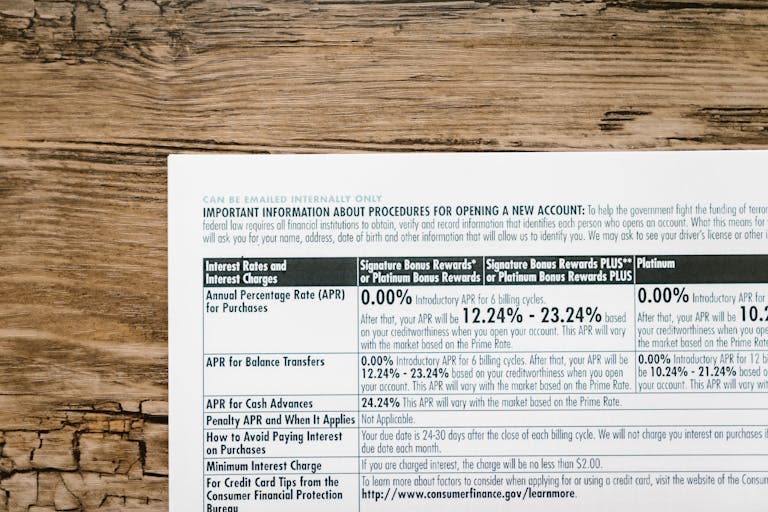What Every NIL Athlete Must Know About Cash‑Flow Planning
With expert estate planning guidance from Ron McCoy at Freedom Capital Advisors, young athletes can secure their wealth, protect their families, and establish peace of mind as they navigate successful athletic careers.
Name, Image, and Likeness (NIL) deals are creating new millionaires overnight. But for top athletes, this sudden wealth can vanish just as quickly—lockouts, compliance delays, and volatile income often leave athletes scrambling for cash. Cash-flow planning is the foundation for turning NIL riches into long-term security. Without a disciplined plan, taxes, lifestyle creep, and income disruptions can wipe out fortunes in a flash.
This guide breaks down proven cash-flow strategies for NIL athletes to protect and grow their wealth, based on lessons learned from decades of elite athlete advising.
The Stakes of Cash-Flow Planning
NIL athletes face cash-flow volatility that few other earners experience. Endorsement deals tied to performance, compliance, or social media presence can swing up or down by 50% in a single year (Forbes, 2024). Lockouts and sponsor disputes can halt payments for months at a time, while federal and state taxes can devour 40–50% of your income before you see a dime. Lifestyle creep—spending that grows with your income—quickly erodes savings. A 2024 Fidelity study found that top earners with a cash-flow plan kept 20–30% more wealth after 10 years than those who just “went with the flow.”
Case Study: The $2.5M NIL Cash-Flow Fortress
Aisha, a 20-year-old track star, earned $2.5M in NIL deals. During a 3-month NCAA lockout, $600K in payments were frozen, and a previous advisor failed to set aside tax reserves—forcing Aisha to sell investments at a loss just to pay the IRS. After working with a fiduciary planner, Aisha built a “cash-flow fortress”: $500K in high-yield savings for liquidity, $300K in municipal bonds, $200K in dividend ETFs, and a $150K dedicated tax account. Passive income from investments and reserves kept her finances steady during the lockout. By 2025, her portfolio grew to $2.7M, with $40K in annual dividends.
Five Elite Cash-Flow Planning Strategies for NIL Athletes
- Build a Liquidity Buffer: Keep 6–12 months of expenses ($50K–$200K) in high-yield savings or money market accounts—your first defense against lockouts or late payments.
- Pre-Fund Taxes Automatically: Set aside 40% of every NIL check in a dedicated tax account. Automate quarterly IRS and state tax payments to avoid penalties.
- Invest for Passive Income: Put 20–30% of earnings into dividend ETFs or muni bonds (2–4% yield). Aim for $5K–$20K/month in passive cash flow to cover basic expenses when income pauses.
- Track Cash Flow Weekly: Use apps like QuickBooks or YNAB to monitor every dollar in and out. Tag by state/deal type for accurate tax and planning records.
- Control Lifestyle Inflation: Cap discretionary spending at 20% of NIL income. Prioritize savings and investment over new cars or risky purchases.
Actionable Tips for NIL Athletes
- Audit Your Earnings Weekly: Always know your cash flow. If you spot irregularities or delays, adjust spending immediately.
- Automate Savings & Tax Transfers: Schedule auto-transfers (e.g., $10K–$20K/month) to your tax and savings accounts. Remove the temptation to overspend.
- Hire a Tax Specialist: Multistate NIL taxes are complicated. Use a CPA who understands athlete income, residency, and source-based taxation.
- Monitor Regulatory Risks: Stay up to date with NCAA and sponsor rules. Anticipate payment freezes and adjust your cash-flow plan accordingly.
- Reinvest Passive Income: Don’t spend your dividends—reinvest them into growth assets or real estate for compounding returns.
Challenges and Considerations
Cash-flow planning is a high-stakes game for NIL athletes. Income volatility, complex multistate tax obligations, and the threat of lockouts require bigger buffers and stricter discipline than traditional earners. Many athletes underestimate how quickly taxes and spending can drain a windfall. The antidote: build reserves, automate good habits, and get professional guidance—especially as regulations and tax laws change.
Conclusion
Cash-flow planning is the difference between short-term fame and lifelong financial security for athletes. Whether you’re in the middle of your NIL journey or just getting started, putting these strategies in place will protect you from volatility and help you build an enduring legacy. Don’t wait for a lockout or tax bill to act—create your plan today, and secure your financial future.
Sources
- Forbes. (2024). NIL Income Volatility and Financial Planning. https://www.forbes.com/sites/nil/2024/04/15/nil-income-volatility/
- Sportico. (2023). NIL Athletes: Tax and Cash-Flow Challenges. https://www.sportico.com/business/nil/2023/nil-tax-challenges-1234567893/
- Fidelity Investments. (2024). Cash-Flow Strategies for High-Income Earners. https://www.fidelity.com/learning-center/personal-finance/cash-flow-strategies
- IRS. (2025). Publication 505: Tax Withholding and Estimated Tax. https://www.irs.gov/publications/p505







